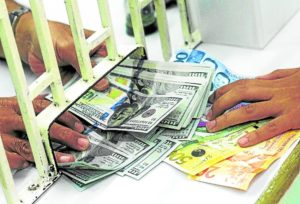MANILA, Philippines — The impending cut in rice tariffs this year could boost the country’s economic growth slightly above the government’s target, an analyst at British banking giant Hongkong and Shanghai Banking Corp (HSBC) said on Monday.
HSBC Asean economist Aris Dacanay said that under the best-case scenario, the tariff cut would add 1.4 percentage points to the Philippines’ gross domestic product (GDP), or the sum of all goods and services produced within the country, this year.
“If all the freed-up household savings go to buys goods that are domestically produced and all of them are spent, nothing is saved, then the potential, the highest, the maximum growth it could deliver is 1.4 percent,” Dacanay said during a round table discussion at the Shangri-La Hotel at the Fort in Taguig City.
READ: Gov’t slashes tariff on rice imports to help cut local prices
Dacanay said that their GDP growth projection for 2024 is 5.8 percent. The Marcos administration’s revised target range is 6 percent to 7 percent.
He added that an above 6 percent growth is also possible by the second quarter, even without the measure, given the low base during the same three-month period last year.
The HSBC analyst also sees the rice tariff cut’s positive impact on inflation, citing that it could ease the general increase in prices of goods and services by as much as 1.8 percentage points.
Immediate impact on inflation
“If the new tariff schedule is implemented within the next month or so, inflation could quickly go down and touch 2 percent,” he said in a report.
“Inflation could even go lower if global prices ease at the same time,” he added.
READ: May inflation nearly breached gov’t target
He added that if the inflation reaches the lower bound of the government target, the Bangko Sentral ng Pilipinas’ (BSP) might have room to cut policy rates faster than the United States (US) Federal Exchange.
“A big reduction in inflation would raise the BSP’s real policy rate and widen its spread from the Feds. If so, this would be an opportunity for the BSP to, perhaps, cut faster than the Fed when both central banks are already within their easing cycles,” said Dacanay.
“Cutting ahead of the Fed, however, will still be tricky and would depend on how fast the disinflationary impact of the tariff adjustment would come through,” he said further.
Last May 16, the BSP Monetary Board during its meeting left the target reverse repurchase rate untouched at 6.5 percent, the highest in 17 years.


